

AIRBUS A318 MODIFICATIONS (127)
ARINC 791 FlightGear™ Ka/Ku Universal Installation
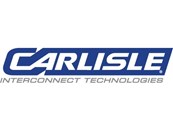
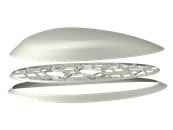
Carlisle Interconnect Technologies, in a partnership with Saint Gobain Performance Plastics, now offers a complete ARINC 791 solution for Ka- and Ku-band SATCOM installations. The complete package contains everything required for either retrofit or forward fit installations on large jet aircraft. Installation fittings are adjustable to cover the complete range of aircraft frame spacing while providing discrete interface loads to the fuselage. The aerodynamic fairing follows the fuselage curvature without requiring a large installation doubler, sealants, or fasteners through the aircraft skin.
SBAS / GNSS Aircraft Integration by Fokker Services
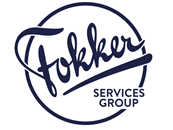
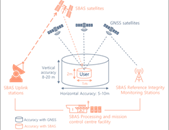

Global Navigation Satellite System (GNSS) refers to a constellation of satellites providing signals from space that transmit positioning and timing data to GNSS receivers. The receivers then use this data to determine position, altitude, time, and velocity. This performance can be improved by regional satellite-based augmentation systems (SBAS).
SBAS improves the accuracy and reliability of GPS information by correcting signal measurement errors and by providing information about the integrity of its signals. SBAS is essential for applications where accuracy and integrity are critical. SBAS is a key enabler of Performance Based Navigation (PBN) usage for Automatic Dependent Surveillance-Broadcast (ADS-B) and Localizer Performance with Vertical Guidance (LPV).
ADS-B Out


Automatic Dependent Surveillance-Broadcast or ADS-B Out as it is known, is a new Air Traffic Control technique for aircraft in both Non-Radar and Radar Airspace. Guiding aircraft to their destination in a safer more efficient way.
ADS-B is a means by which aircraft, aerodrome vehicles and other objects can automatically transmit and receive data. Identifying themselves and their position via a data-link. This user friendly broadcast mode keeps communication lines open, informing people on the ground and in the air of real time developments. ADS-B out is the first step and will only send data from the aircraft.
Non-reliant on external input the ADS-B Out is automatic, depending solely on existing on-board transmission services to provide surveillance information to other users.
To view the ADS-B Out Webpage, please check: https://www.fokkerservices.com/services/aircraft-modifications/ads-b-out
Underwater Locator Device - ULD - Fokker Services


Events related to aircraft missing over oceanic areas have led to several new requirements, amongst which is the introduction of a long-range Underwater Locator Device (ULD).
The ULD low frequency (8.8kHz) technology is used to increase the range at which aircraft submerged wreckage can be located.
It will be mounted on the aircraft structure free of sound absorbent materials and not in wing sections or empennage. The installation is in accordance with ARINC specification 667, which describes the removal, installation and maintenance aspects of an ULD installation.
Note that the ULD is not to be confused with the Underwater Locator Beacons (ULB) as installed on the CVR and FDRs. The ULD is complementary to the ULB and is mounted to the aircraft structure.
ICAO states that by January 1st 2018 aircrafts flying long range over water with a MTOW>27.000 kg must be equipped with an ULD. Long range over water is determined by the exceedance of the distance from a suitable emergency landing spot. The distance corresponds to 120 min at cruise speed or 400NM whichever is the lesser.
EASA states that by January 1st 2019 Passenger aircraft flying long range over water with a MTOW>27.000 kg and cargo aircraft with MTOW > 45.500kg must be equipped with an ULD. Long range over water is determined by a distance >180 NM from shore.
CARS 121 MOS 11.64 states that aircraft with a MTOW>27.000 kg carrying a life raft should have an ULD by December 2, 2023.
Other authorities have accepted similar rules.
Contact Fokker Services for other aircaft types.
LED Sealed Beam Replacement Lamps for Part 25 aircraft

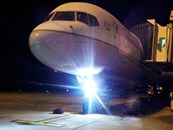
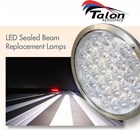
LED Sealed Beam Replacement Lamps from Talon
Get Light-Years ahead of your competition!
Talon Aerospace sealed beam replacement lamps are designed to allow for plug and play replacement of the existing sealed beam lamps fitted on an aircraft. Talon has 3 sizes available, with replacements for the Par 64 landing, Par 46 taxi and Par 36 logo, runway turn-off, engine and wing scan applications. The existing sealed beam lamps have a design life span between 25 and 300 hours while the Talon LED replacements are designed for 20,000 in service hours.
Light output is comparable to OEM lamps and the Par 64 landing light and Par 46 taxi light are designed to meet Mil Spec standard MIL-L-6503H. The LED replacements work with the existing transformers on the aircraft and are designed to minimize the overall LRU count within an operator inventory. The LED replacement lamps are designed with cool white LEDs to maximize light output but the Par 36 logo is also made available in warm white. Par 36 LED replacement lamps operate on both 13V and 26V AC, while the Par 46 and 64 operate on 26 VAC. All lamps can also operate on 28VDC, allowing for rotorcraft applications.
Talon LED sealed beam are designed at comparable weight to existing sealed beam lamps of equal size, allowing them to be used in existing fixtures. The current draw for the LED lamp is significantly lower compared to the existing units. Landing light Q4559X draws 650W while Talon LED replacement TAE0728-1 draws only 104W.
The LED replacement lamps are fully repairable and operator can replace individual components like the LED board, power supply and lens in case of failures, reducing cost of ownership.
Talon and Proponent
Proponent is the exclusive global distributor of all Talon Aerospace products. This relation provides customers with the latest generation of LED lights.
Proponent
Proponent is the new identity representing Kapco Global and Avio-Diepen as one united company, and the unique capabilities that the new organization brings to the aerospace market. With extensive experience in supporting the MRO, OEM and airline markets, our organization offers innovative inventory and supply chain management solutions to OEM and aftermarket customers.
EFB Solution for iPad® (EASA and FAA Certified)

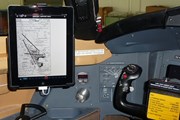
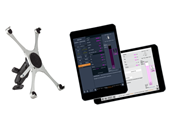
FAA: ST03700NYEASA: 10046185FAA STC EFB 737 ST03939NY
Fokker Services has joined forces with Navtech, Jepessen and Dynamicsource AB, leading providers of flight operations solutions, and developed an EFB solution for iPad® installation that may revolutionize the way we navigate our skies. Technology moves quickly, and at Fokker Services it is our policy to stay ahead of the game. We design and launch more than 300 aircraft modifications every year, believing that even an already functioning product can be improved on. In recent years Apple has captured the hearts of the consumer with their innovative thinking, whilst Navtech represent quality and credibility within the aviation industry. Combined with the history and experience at Fokker, the development of such an innovative yet simple solution felt like a natural progression. Service providers today are under a lot of pressure to meet growing demands. Products must be efficient, safe, cost effective, user and environmentally friendly; Our EFB installation is ticking all the boxes and is available for most aircraft types, including Airbus, Boeing, ATR, Bombardier Challenger & CRJ Family, Embraer, Fokker and others.
Over 1300 installations and upgrades have been ordered
Traffic alert and Collision Avoidance System (TCAS) 7.1

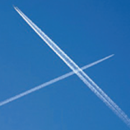
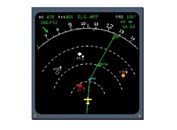
The Traffic alert and Collision Avoidance System (TCAS) has been introduced in order to reduce the risk of mid-air collisions or near mid-air collisions between aircraft. When TCAS II version 7.1 is implemented the probability of mid-air collisions will be reduced significantly. *
The introduction of TCAS change 7.1 software is available for Fokker 50, Fokker 70 and Fokker 100 aircraft as well as for other types of aircraft like Airbus A318, A319, A320, A321, Boeing 737 series, 757, 767, Bombardier Dash 8 and CRJ. (* source: www.eurocontrol.int)
FDR and CVR upgrade - ULB 90 days - A300 / A310 and A320 family (incl. NEO)
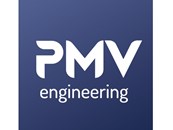
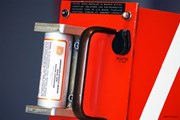
The EASA OPS regulation has mandate the CVR (Cockpit Voice Recorder) and FDR (Flight Data Recorder) with a 90 days ULB (Underwater Locator Beacon) by 16 June 2018.
In support to the airlines for compliance demonstration to these rules, PMV Engineering has developed 2 STCs (10067059 and 10062621) that cover several CVR and FDR manufacturers to upgrade the CVR and FDR from 30 days to 90 days ULB.
Installation TECHTEST survival ELT on Airbus A320 family

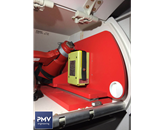
PMV Engineering received an EASA STC certificate for the installation of a TECHTEST survival ELT on Airbus A320 family aircraft.
This STC deals with the latest EASA requirements for embodiment of non-rechargeable Lithium Batteries, e.g compliance with ETSO C142A associated with a risk assessment at aircraft level in order to substantiate that a thermal runaway of the Lithium battery included in the ELT would not impair the safety of flight.
Zonal Dryer on A320 family
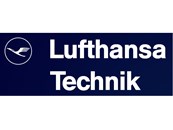

The Zonal Drying system keeps the humidity in the crown area at a level where it will reduce the condensation on the fuselage skin inner surface and stop water accumulation in insulation blankets.
By creating differential vapor pressure in the intermediate space on the aircraft the crown area and subsequently the sidewalls will dry out.
The Zonal DryingTM system includes the following equipment’s and components:
-
Zonal Dryer
-
Control Panel
-
Filter Box
-
Ducting System

